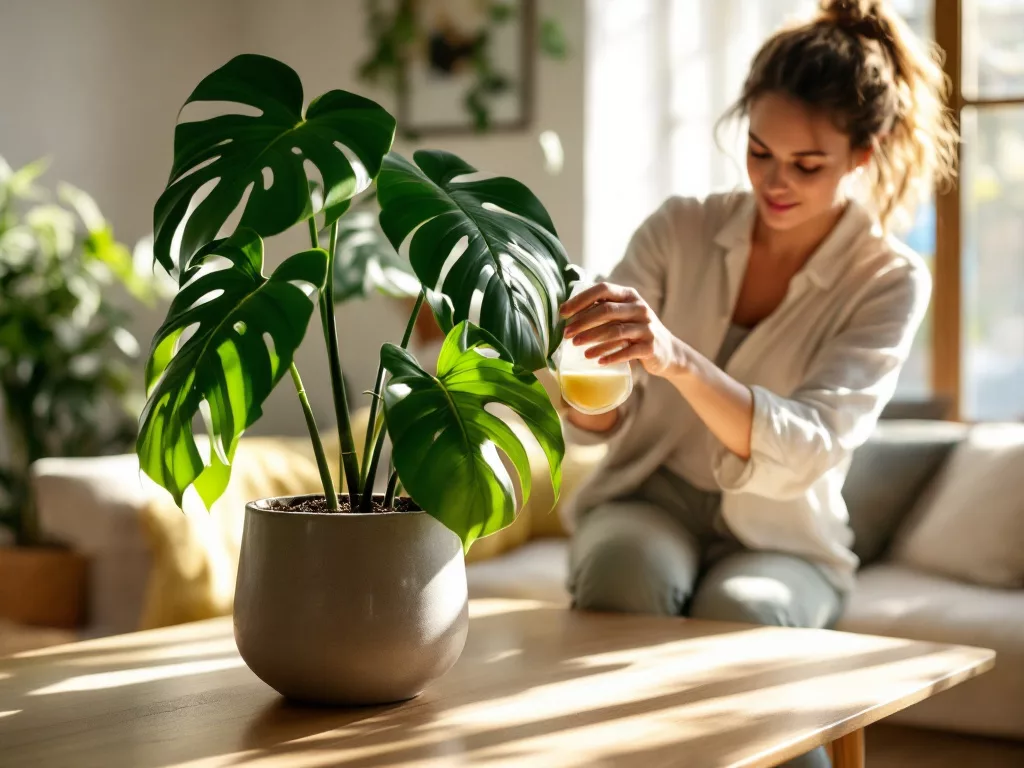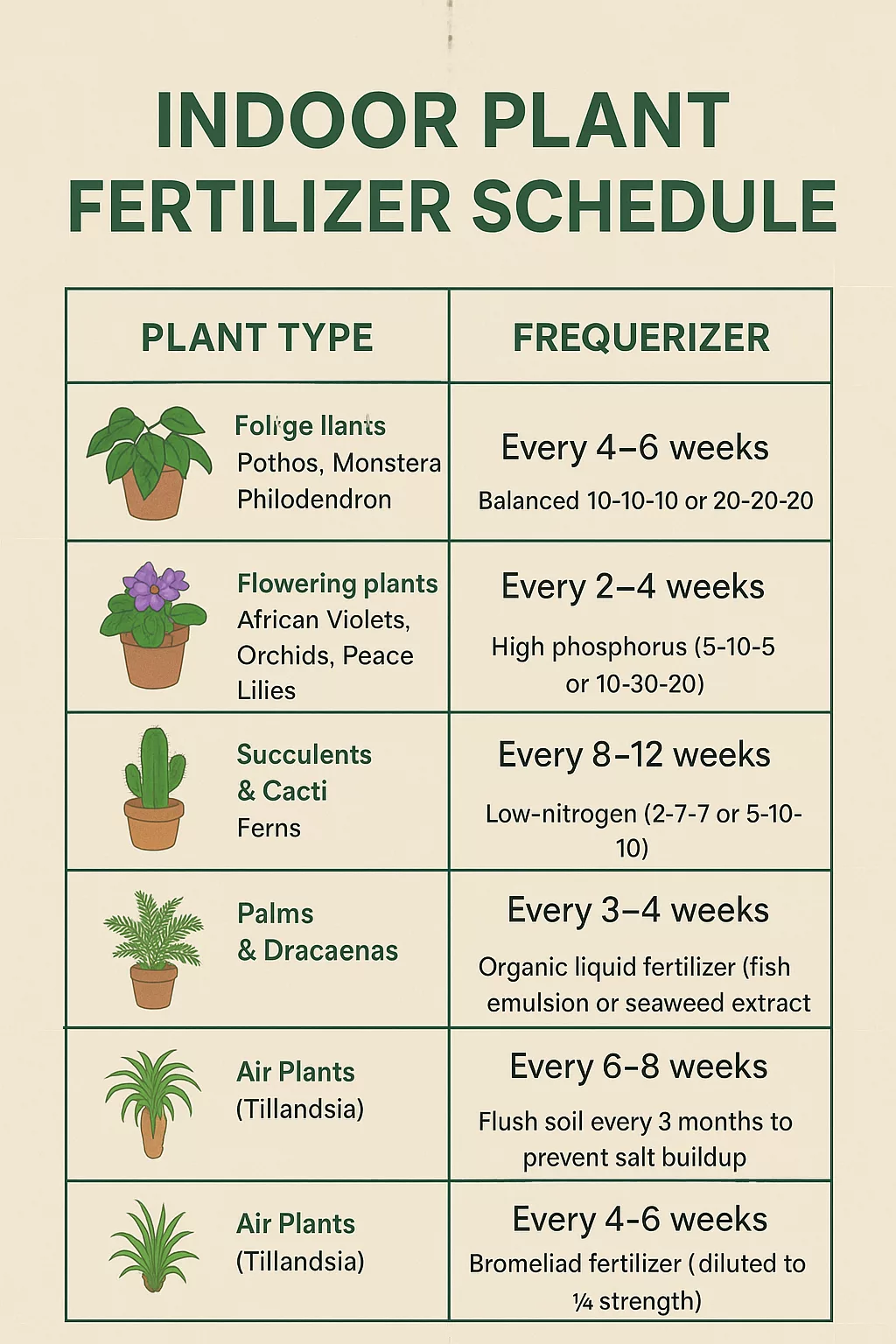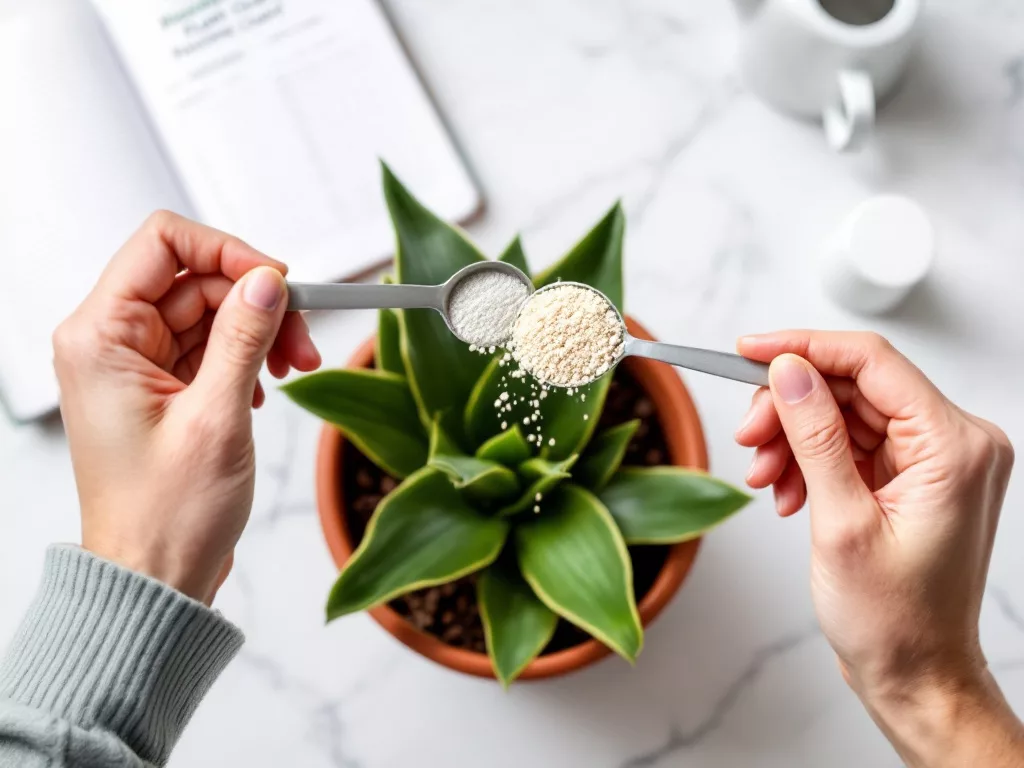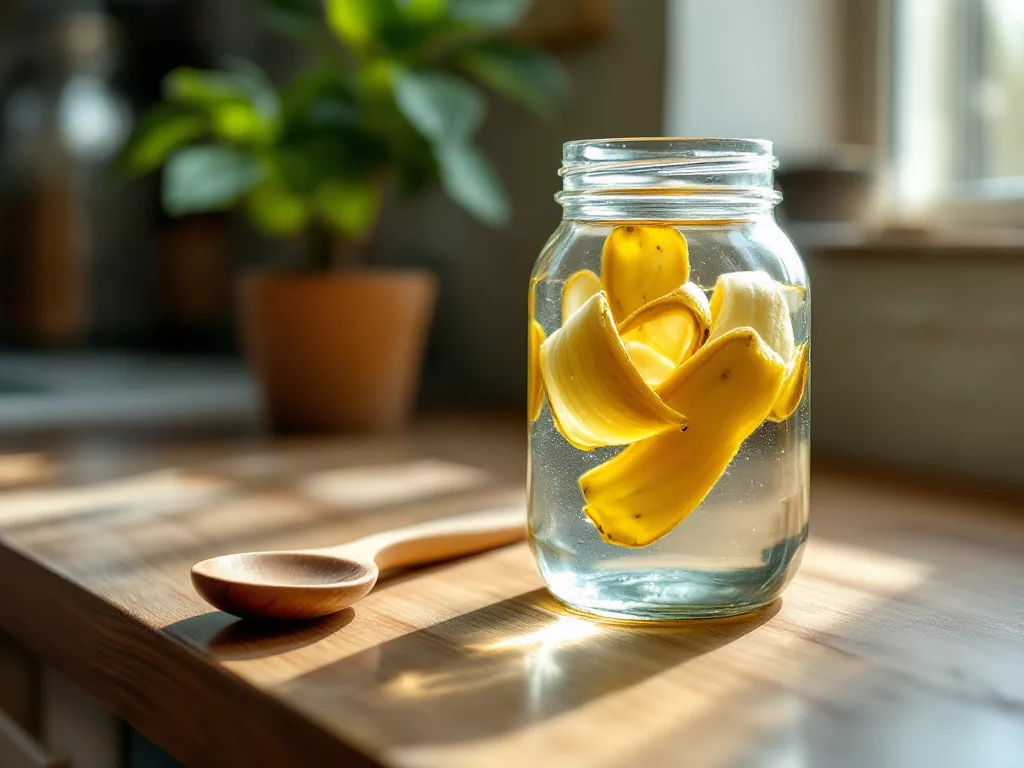Why Your Indoor Plant Fertilizer Schedule Is the Key to Thriving Plants
Have you ever wondered why your indoor plants aren’t thriving, despite your best efforts? The secret often lies in your indoor plant fertilizer schedule. Just like humans need a balanced diet to stay healthy, your plants rely on a consistent indoor plant fertilizer schedule to grow strong, resist pests, and produce lush foliage or vibrant blooms. Without a proper feeding routine, even the hardiest houseplants can become weak, pale, or stagnant.
If you’re new to indoor gardening, understanding how much fertilizer to use and when to apply it can feel overwhelming. But don’t worry—this guide will walk you through everything you need to know. You’ll discover how to create a foolproof indoor plant fertilizer schedule, avoid common mistakes, and adjust your approach based on your plants’ unique needs and the changing seasons. Let’s turn your home into a thriving green oasis!

🌿 Why Your Indoor Plant Fertilizer Schedule Is Essential for Healthy Growth
The Science Behind Plant Nutrition
Plants, just like us, need a balanced diet to thrive. While they create their own energy through photosynthesis, they rely on soil nutrients for essential minerals. The three primary macronutrients—Nitrogen (N), Phosphorus (P), and Potassium (K)—play distinct roles in plant health:
- Nitrogen (N): Promotes leafy growth and keeps foliage vibrant. It’s ideal for foliage plants like Pothos, Monsteras, and Philodendrons.
- Phosphorus (P): Supports root development, flowering, and fruiting. This nutrient is critical for blooming plants like African Violets, Orchids, and Peace Lilies.
- Potassium (K): Strengthens plant immunity, helps with water regulation, and improves overall resilience against pests and diseases.
Micronutrients like calcium, magnesium, and iron are also vital, though required in smaller amounts. A well-structured indoor plant fertilizer schedule ensures your plants receive these nutrients consistently, preventing deficiencies and promoting healthy growth.
Did You Know? According to research from the University of Florida, plants grown with a consistent indoor plant fertilizer schedule can grow up to 50% faster than those left unfertilized.
What Happens If You Skip Fertilizing?
Ignoring your indoor plant fertilizer schedule can lead to a host of problems, including:
- Slow or stunted growth
- Pale or yellowing leaves (a classic sign of nitrogen deficiency)
- Weak stems or leggy growth
- Lack of flowers or fruit (common in phosphorus-deficient plants)
- Increased susceptibility to pests and diseases
For example, a Peace Lily without enough phosphorus may stop producing its signature white blooms, while a Snake Plant starved of nitrogen will grow slowly and lose its rich, deep green color.
📅 The Ultimate Indoor Plant Fertilizer Schedule (By Plant Type)
Not all plants have the same nutritional needs. Below is a plant feeding chart to help you tailor your indoor plant fertilizer schedule to different types of houseplants:
| Plant Type | Frequency | Best Fertilizer Type | Seasonal Adjustments |
|---|---|---|---|
| Foliage Plants (Pothos, Monstera, Philodendron) | Every 4–6 weeks | Balanced (10-10-10 or 20-20-20) | Reduce to every 8 weeks in winter |
| Flowering Plants (African Violets, Orchids, Peace Lilies) | Every 2–4 weeks | High phosphorus (5-10-5 or 10-30-20) | Increase frequency before blooming |
| Succulents & Cacti | Every 8–12 weeks | Low-nitrogen (2-7-7 or 5-10-10) | Skip fertilizing in winter (dormancy) |
| Ferns | Every 3–4 weeks | Organic liquid fertilizer (fish emulsion or seaweed extract) | Mist leaves to boost humidity |
| Palms & Dracaenas | Every 6–8 weeks | Slow-release granules (14-14-14) | Flush soil every 3 months to prevent salt buildup |
| Air Plants (Tillandsia) | Every 4–6 weeks | Bromeliad fertilizer (diluted to ¼ strength) | Soak in fertilizer solution for 20 minutes |

How to Adjust Your Indoor Plant Fertilizer Schedule for Seasons
Your indoor plant fertilizer schedule should change with the seasons to match your plants’ natural growth cycles:
- Spring & Summer (Active Growth): Fertilize regularly as plants are actively growing. You can increase the frequency slightly for flowering or fast-growing species.
- Fall (Transition Period): Gradually reduce fertilizing as growth begins to slow.
- Winter (Dormancy): Most plants need little to no fertilizer during this time. Over-feeding in winter can lead to salt buildup in the soil, which damages roots.
Pro Tip: If you live in a region with mild winters, such as Southern California or Spain, your plants may not enter full dormancy. In this case, adjust your indoor plant fertilizer schedule by observing your plants’ growth patterns and reducing fertilizer by about 50%.
📊 Plant Feeding Chart: How Much Fertilizer to Use for Best Results
Understanding how much fertilizer to use is critical for avoiding common mistakes like over- or under-fertilizing. Here’s a breakdown of the different types of fertilizers and how to use them effectively:
Liquid vs. Granular vs. Slow-Release Fertilizers
| Fertilizer Type | Pros | Cons | Best For |
|---|---|---|---|
| Liquid Fertilizer | Fast-acting, easy to dilute and apply | Requires frequent application (every 2–4 weeks) | Foliage plants, flowering plants, and fast-growing species |
| Granular Fertilizer | Long-lasting, less frequent application | Can cause salt buildup in soil if overused | Outdoor plants, large potted plants |
| Slow-Release Fertilizer | Low maintenance, provides consistent nutrients | Difficult to adjust dosage once applied | Busy plant parents, succulents, and cacti |
| Organic Fertilizer | Gentle on plants, improves soil health | Slower results, may have an odor | Eco-conscious gardeners, edible plants |
Dilution Ratios for Common Houseplants
Always dilute liquid fertilizers to half-strength for indoor plants to avoid burning their roots. Here’s a quick guide for how much fertilizer to use based on plant type:
- Foliage Plants (Pothos, Monstera, Philodendron): ½ teaspoon of 10-10-10 fertilizer per gallon of water, applied every 4–6 weeks.
- Flowering Plants (African Violets, Orchids): ¼ teaspoon of 5-10-5 fertilizer per gallon of water, applied every 2–4 weeks.
- Succulents & Cacti: ¼ teaspoon of 2-7-7 fertilizer per gallon of water, applied every 8–12 weeks.
- Ferns & Calatheas: Use organic fish emulsion or seaweed extract, diluted to ¼ strength, every 3–4 weeks.

Warning: Over-fertilizing is far worse than under-fertilizing! Always follow your plant feeding chart and err on the side of caution. If you’re unsure, start with a weaker dose and gradually increase as needed.
⚠️ Common Mistakes in Your Indoor Plant Fertilizer Schedule (And How to Fix Them)
Even with the best intentions, it’s easy to make mistakes when fertilizing your indoor plants. Here are the most common issues and how to correct them:
Over-Fertilizing: Signs and Solutions
Symptoms of Over-Fertilizing:
- Brown or yellow leaf tips
- Crusty white deposits on the soil surface (salt buildup)
- Wilting or drooping leaves, even when the soil is moist
- Stunted growth or leaf drop
How to Fix It:
- Flush the Soil: Run water through the pot for 5–10 minutes to wash out excess salts and fertilizer buildup.
- Pause Fertilizing: Skip the next 1–2 feeding cycles to give your plant time to recover.
- Repot if Necessary: If the roots are severely damaged, repot your plant into fresh, nutrient-rich soil.
I once over-fertilized my Fiddle Leaf Fig, thinking more fertilizer would make it grow faster. Instead, it dropped half its leaves! After flushing the soil and switching to a diluted fertilizer schedule, it bounced back within 6 weeks.
Under-Fertilizing: How to Revive Nutrient-Starved Plants
Symptoms of Under-Fertilizing:
- Pale or yellowing leaves, especially on older foliage
- Slow or no growth, even during the growing season
- Small, weak new leaves
- Lack of flowers or fruit in flowering plants
How to Fix It:
- Start Slow: Use a balanced fertilizer at ¼ strength for the first application to avoid shocking the plant.
- Monitor Progress: If the plant responds well, gradually increase to the recommended dose in your indoor plant fertilizer schedule.
- Check Light & Water: Ensure your plant is receiving adequate light and proper watering—fertilizer won’t help if these basic needs aren’t met!
🌱 DIY Indoor Plant Fertilizer Recipes: Natural and Budget-Friendly Options
If you prefer a more natural approach, you can make your own fertilizers at home using common kitchen scraps. Here are three easy and effective DIY recipes:
1. Banana Peel Fertilizer (For Potassium)
Why It Works: Banana peels are rich in potassium, which strengthens plants and promotes flowering.
How to Make It:
- Chop 2–3 banana peels and soak them in 1 liter of water for 3 days.
- Strain the liquid and dilute it with water in a 1:1 ratio.
- Use the “banana tea” to water your plants every 2 weeks.

Best For: Flowering plants like Orchids, African Violets, and Peace Lilies.
2. Eggshell Calcium Boost
Why It Works: Eggshells provide calcium, which prevents blossom end rot and strengthens cell walls.
How to Make It:
- Rinse and dry eggshells, then crush them into a fine powder using a mortar and pestle or blender.
- Mix the eggshell powder into the soil, or steep it in hot water for 24 hours to make “eggshell tea.”
- Apply the eggshell tea or powder to the soil every 4–6 weeks.
Best For: Tomatoes, Peppers, and Calatheas.
3. Coffee Ground Fertilizer (For Acid-Loving Plants)
Why It Works: Coffee grounds add nitrogen to the soil and improve its structure, making them ideal for acid-loving plants.
How to Make It:
- Mix 1 cup of used coffee grounds into the top 2 inches of soil.
- Water thoroughly to help the nutrients seep into the soil.
- Repeat every 4–6 weeks.
Warning: Avoid using coffee grounds on succulents or plants that prefer alkaline soil, such as Snake Plants and ZZ Plants.
🔍 Case Study: Transforming a Dying Plant with the Right Indoor Plant Fertilizer Schedule
How I Saved My Fiddle Leaf Fig in 6 Weeks
My Fiddle Leaf Fig (Ficus lyrata) was dropping leaves like crazy, and the new growth was small, pale, and weak. I suspected a nutrient deficiency, but I wasn’t sure how to fix it.
Solution:
- Diagnosed the Issue: I ruled out overwatering and pests. The leaves were uniformly pale—a classic sign of nitrogen deficiency.
- Adjusted the Fertilizer: I switched to a balanced 10-10-10 fertilizer, diluted to half-strength, and applied it every 4 weeks.
- Added Magnesium: Fiddle Leaf Figs are prone to magnesium deficiency, so I sprayed the leaves with an Epsom salt solution (1 teaspoon per liter of water) every 2 weeks.
- Monitored Progress: After just 3 weeks, I noticed new leaves emerging darker and larger. By 6 weeks, my Fiddle Leaf Fig was thriving again!
Lesson: Sometimes, all a struggling plant needs is the right nutrients at the right time. Don’t give up on a plant that’s not doing well—adjust your indoor plant fertilizer schedule and watch it make a comeback!
❓ FAQs About Indoor Plant Fertilizer Schedules
Can I Use Outdoor Fertilizer for Indoor Plants?
It’s not recommended. Outdoor fertilizers are often stronger and designed for fast-growing garden plants. Indoor plants thrive on gentler, diluted formulas. Stick to fertilizers labeled for “houseplants” or “indoor use.”
Is It Better to Fertilize in the Morning or Evening?
Morning is ideal. Plants absorb nutrients more efficiently during daylight hours. Fertilizing in the evening can leave moisture on leaves overnight, increasing the risk of fungal diseases.
What’s the Best Fertilizer for Snake Plants?
Snake Plants (Sansevieria) are low-maintenance and prefer infrequent feeding. Use a diluted cactus fertilizer (2-7-7) every 2–3 months during spring and summer. Skip fertilizing in winter.
How Do I Know If My Plant Needs Fertilizer?
Look for these signs:
– Slow or no growth
– Pale or yellow leaves (especially on lower foliage)
– Weak, leggy stems
– Lack of flowers (in flowering plants)
But first, rule out other issues like poor lighting, overwatering, or pests.
Can I Fertilize a Plant Right After Repotting?
Wait 4–6 weeks. Fresh potting mix contains nutrients, and fertilizing too soon can burn tender new roots. Let the plant acclimate first!
How Often Should I Use a Plant Feeding Chart?
A plant feeding chart is a helpful tool to keep your indoor plant fertilizer schedule on track. Refer to it every time you fertilize, especially when switching between seasons or introducing new plants to your collection. Over time, you’ll develop a routine that works for your specific plants.
🌟 Conclusion: Your Path to Thriving Indoor Plants
Your indoor plants are more than just decor—they’re living companions that respond to care and attention. By following this indoor plant fertilizer schedule, you’ll provide the nutrients they need to grow strong, resist pests, and fill your home with vibrant greenery.
Remember:
- Start slow—it’s easier to add more fertilizer than to fix over-feeding.
- Observe your plants—they’ll tell you what they need.
- Adjust for seasons—less in winter, more in spring and summer.
If you’re eager to expand your indoor garden, consider exploring how to start an indoor garden for beginners to build a solid foundation. And if you’re looking for the perfect fertilizer, this guide on best indoor plant fertilizers for beginners will help you make the right choice.
Ready to transform your space? Pick one plant, set a reminder, and start your fertilizing routine today. Your leafy friends—and your home—will thank you!
More info about fertilizer shedule
